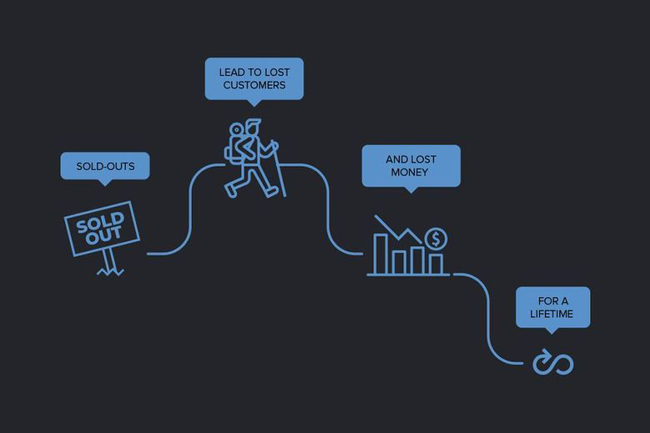
By Max Chertkov
Did you know that securing a new customer costs between 5 to 25 times more than retaining an existing client? Although several factors can lead to losing a customer, booking failures and sold-outs have a major impact on customer loyalty.
Strong businesses are built on the fundamental understanding of customer lifetime value – a customer once won can become a customer for life. Today's highly competitive travel market, especially online, bears numerous challenges when it comes to winning a customer. In fact, the revenue from the first customer booking often barely covers the acquisition cost. For this reason, customer retention is becoming increasingly important in the continuously growing landscape of travel distribution, meaning that travel agents must prioritize their relationship with customers by offering the best service, while still generating profit.
Understanding customer pain-points: a necessary priority
To secure a lasting relationship with customers, online travel agencies (OTA) need to consider a few key priorities. For one, the product needs to be presented optimally, making it attractive and easy to purchase for the prospective customer. Furthermore, good customer service at any point of a customer's booking journey is one of the make-or-break factors for whether the purchase will be completed. According to invespcro,"89% of companies see customer experience as a key factor in driving customer loyalty and retention."
Additionally, "according to the White House Office of Consumer Affairs, on average, loyal customers are worth up to 10 times as much as their first purchase," as reported by Roomstorm, a B2B network for hoteliers. This means that the lost revenue from losing a customer due to booking errors such as sold-outs is significant. Considering a standard hotel booking is around $300, we can estimate the lifetime revenue loss due to a sold-out or booking failure to be approximately $3000. Further, if we take into account seasoned travelers who make travel bookings several times a year over the course of their lifetime, that number can easily reach tens of thousands of dollars per lost customer.
In travel, as in many other industries, the most important point in the sales cycle is the moment a prospective customer turns into a client. This is the moment he commits to the purchase. After the long journey of gaining a customer's attention, standing out in the ocean of offerings and leading them to the actual point of sale, is when the return on investment (ROI) happens. The worst thing that can happen at this point is to lose a customer due to a booking failure.
Remaining the first choice in a competitive landscape
Because of the time and effort customers spend on the entire process leading up to the booking, a failed booking often leads customers to another site, washing out all the effort required to gain the customer. This is further exacerbated by the fact that many clients spend a large amount of time comparing offers. In fact, a recent Expedia study states that customers visit on average 38 sites before deciding on a booking. And with many other previously seen options, one sold-out can lead them elsewhere in an instant. As Wendy Killon, director of product management and product marketing for Expedia, states in an article on travelmarketreport.com: "travel is complicated to book," despite the wealth of information out there, "consumers have so many choices." Therefore, travel companies can't afford continuous sold-outs and failed bookings and should prioritize wherever possible to mitigate them in order secure customer retention.
Leveraging technology
The effects of sold-outs and failures cannot be underestimated. As such, travel businesses should pursue opportunities to reduce their impacts especially with the advancement of technology and its growing prevalence in the travel industry. Whenever available, it is critical to find solutions that influence these crucial junctures of a customer's online journey. According to McKinsey & Company, customers have grown accustomed to the professionalism of digital natives such as Google and Amazon and now expect this level of service from less established players. In fact, "research shows that 25 percent (of customers) defect after just one bad experience."
Finding the right solution for solving the momentous problem of sold-outs and failed bookings can be complicated and not necessarily apparent. Until now, no company has tackled the challenge of creating a solution that acts within the time frame between the pre-booking and booking phase. With recent technological innovations, travel companies should be on the lookout for upcoming developments. Studies show that companies implementing digital technologies significantly outperform their competitors, so there is no time to be wasted.
To better retain customers and deliver against predictable outcomes, travel businesses should explore technology solutions that resolve their greatest pain points. The pace in travel continues to accelerate and the competition for customers' bookings has never been this fierce. Significant revenue loss can potentially be avoided through innovative solutions. Don't miss out on customers, the price is too high.


